All You Need to Know About Camels (Types, Milk, Hump)
When we speak of camels, we are always reminded of a desert-like atmosphere where camels walk on hot sand dunes of the oriental lands. It is true that camels are interesting species mostly living in Africa and Asia and are known for their tolerance against harsh weather conditions of arid places and their ability to store large amounts of water for long distances.
Some camels are domesticated by locals and have aided them in many ways, such as the transportation of goods and people. Camel riding is commonly found in places offering desert activities to tourists.
In this article, we will introduce you to different camel types and some interesting facts about them.
Why Are Camels Special?
Camels are hoofed mammals inhabiting the dry lands of Asia and Africa. These species can walk for long periods of time without drinking any water. They store water in their humps since in desert areas, access to water is very limited. By doing this, they can live and walk for miles without a single drop of water.
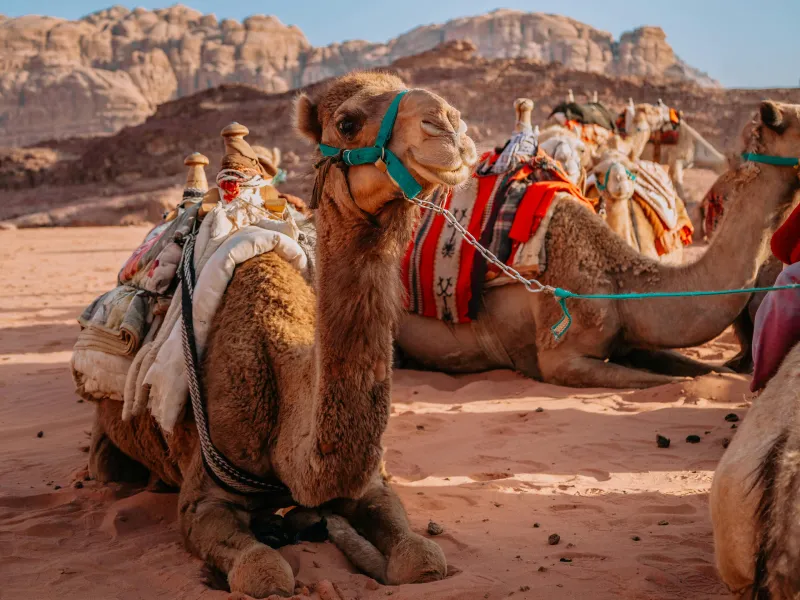
How long can camels go without water? They can survive without water for six to seven months with no sources of water. When camels need energy to survive, they use the fat stored inside their humps. Its body is able to metabolize and burn the fat for nutrition.
Camel Hump and Storing Water
The camel humps deflate when they are out of the food for a long time, but after refueling their body, the humps will sit upright once again. The humps also allow camels to regulate their body temperature in the hot and dry climate of the desert. Note that in deserts, the temperature is extremely high during the day, and by nighttime, the temperature drastically drops, making the air cooler.
When the temperature is high, and the camels’ body temperature rises, their body concentrates the fatty tissue in their humps laying over their backs which will result in minimizing the heat insulation through the rest of their body during the day. At night, the extra heat dissolves away throughout the camel’s body to avoid the lower temperatures of the night.
Their humps do not store water but rather the fat that is used as food. Due to the unique shape of their red blood cells as an oval, they have the ability to store large amounts of water for weeks. These oval-shaped blood cells help camels to take in large amounts of water, which is approximately 30 gallons in one sitting.
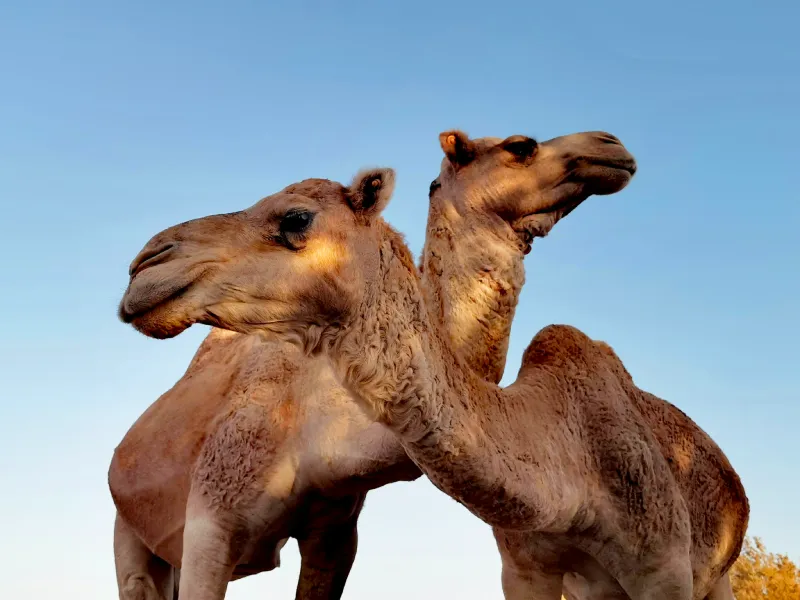
The blood cells in their bloodstream are elastic and have the ability to shape more easily. The oval shape aids their blood to flow more efficiently when camels are in deserts where there is water scarcity.
Camel humps are highly crucial for the survival of this mammal in harsh environments such as deserts. Camels will sweat and overheat without the existence of their humps. Thus, their humps are considered as one of the most important parts of their body as well as the special shape of their blood cells making everything easy for them.
Camel Eyes
Camels have a long row of heavy eyelashes, which protect their eyes from the blowing sand of the desert. Moreover, their nostrils can be squeezed shut during sandstorms. Their thick eyebrows also shield the eyes from the desert sun. More interestingly, camels have three sets of eyelids, which helps them to keep sand out of getting into their eyes.
Camel Milk
One of the reasons for domesticating camels is for their milk. Camel milk is used in many countries of the world as a staple diet. The milk is rich in many healthy substances like lactoferrin, mono and polyunsaturated fatty acids, zinc, and bioactive peptides.
These beneficial substances found in camel milk can treat many diseases, such as asthma, jaundice, tuberculosis, and gastrointestinal diseases.
Based on the region and season, the ratio of the compounds in camel milk will change. The milk is not only made of numerous proteins but also bears indigenous proteases such as chymotrypsin A and Cathepsin D.
Camel Height
Most camels are above average human height. A Bactrian camel grows to a shoulder height of 6 feet (1.8 meters) and a body length of 10 feet (3 m).
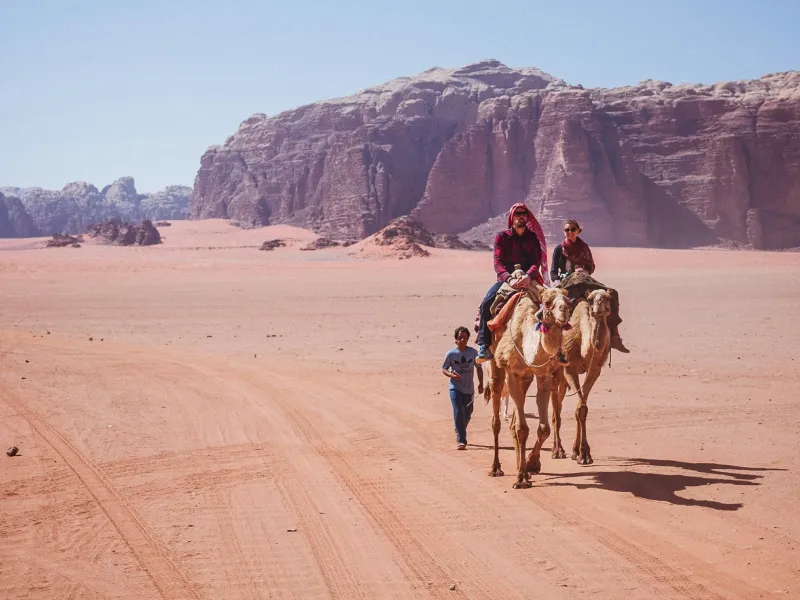
These camels normally weigh around 1,320 to 2,200 lbs. (600 to 1,000 kg) when they are fully grown. Dromedary camels grow up to about 6.5 feet (2 m) tall at the shoulder and weigh 880 to 1,325 lbs. (400 to 600 kg).
Domestic Animals
Camels are also useful domestic mammals, helping passengers and nomads to travel around from place to place. Camels were first domesticated in Southern Arabia about 4000 to 3000 BC. They were an important domestic livestock population in many parts of the dry lands of the world.
These mammals are known for inhabiting mostly dry areas where there is little rainfall or rain for short periods of time. Due to its special physiology, camels are distinguished animals that can tolerate the desert climate, unlike other domestic farm animals.
Most domesticated camels are found in dry and semiarid areas of the Indian subcontinent, the Arabian Peninsula, and throughout North and East Africa.
Camel Types
Camels can fall into several categories based on their physical appearance and abilities. Here are some of the most common camel types you will find in the eastern part of the globe.
Dromedary Camel
Arabian camels, also known as dromedary camels, have only one hump, but they use their hump to great effect. Their hump can store up to 80 pounds of fat, which can break down into water and energy when nutrition is not available.
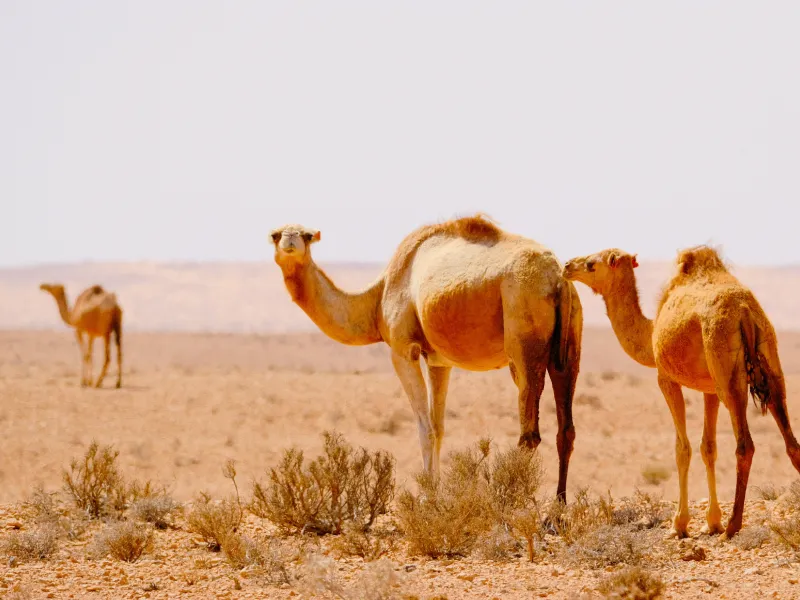
These humps give camels their unique ability to travel up to 100 desert miles without any water. Camels rarely sweat, even in desert temperatures that reach up to 120°F (49 degrees Celsius), so when they do take in fluids such as water, they can conserve them for long periods of time.
In winter, even desert plants may hold enough moisture to allow a camel to live without water for several weeks. The dromedary camels have been domesticated since 3,500 years ago and have been known as pack animals.
Bactrian Camel
Unlike dromedary camels, Bactrian Camels have two humps on their backs. Their humps function the same way as other camels. They store fat and convert it to water and energy when water is scarce.
These camels have longer hair and short stature. Bactrian camels were domesticated in an ancient region of Bactria, now Afghanistan, Uzbekistan, and Tajikistan. In addition, Bactrian camels are mainly distributed through the deserts and semi-deserts of the north and northwest of China and throughout Mongolia.
The temperature of the areas where Bactrian camels are raised ranges from −20 to 40 °C. They are multipurpose animals, mainly used for producing wool and working. The color of its long, woolly coat ranges from dark brown to sandy beige.
Wild Bactrian Camel
Wild Bactrian camels have two humps and inhabit the steppes and arid regions of Eurasia. The domesticated Bactrian camel is found from southern Ukraine, the south to the Middle East, and east to the steppes of Mongolia; the wild Bactrian camel is limited in number.
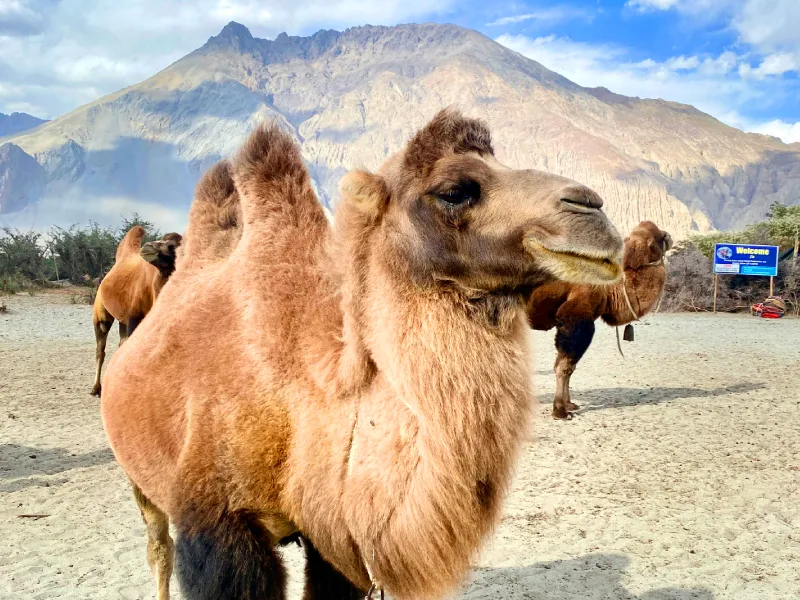
There are only a few small pockets of them in China and Mongolia. These camel types are endangered species of the wild. Their features are closely related to the domestic Bactrian camels.
Cama Camel
Cama camels are hybrid animals created by crossbreeding dromedary camels from Asia with South American llamas. Despite differences in size, morphology, and geographic distribution, camel and llama are distant relatives.
They evolved from the same ancestor. Cama camels can reach 49 to 57 inches in height (at the shoulder) and 180 to 1.000 pounds in weight.
Facts About Camels
When camels walk, their wide feet distribute their weight across the sand. Camel waste contains very little water, and even the moisture from their breath circulates back into their mouths.
Camels have a long, slender necks to reach high leaves and protect their skin while kneeling or sitting on the hot sand. This also assists in reaching rubbery areas on their belly and knees.
To eat dry, prickly plants, camels have thick, rubbery lips and a big, haired tail to swat pests.
Camels are referred to as “Ships of the desert.”
When walking 32 kilometers a day in the harsh drylands, camels can comfortably bear an additional 90 kilograms.
Camel Riding
Camel rides are a thrilling desert activity everybody loves to experience when visiting the Middle East. The ride is a great way to encounter the traditional way of exploring the desert landscapes.

Although camels are not horses, they have been used as a means of transportation for centuries.
Matinabad Eco Resort Camel Riding
For exciting camel riding, one of the best locations we recommend is Matinabad Eco Resort, offering a variety of services to its visitors. The resort provides safe and exhilarating camel riding with the guidance of a professional.
This activity is put into two sessions, one held in the morning and another in the afternoon so that travelers can experience camel riding in different hours of the day. At specific parts of the year, camel riding in Matinabad Eco Camp is free of charge.
Final Word
Camels are fascinating animals and are known for their ability to endure the harsh environments of the desert. They are the only mammals alive that can store large amounts of water for a long time and walk on desert dunes for miles without needing to drink from a pond or any other sources of water. More importantly, they have aided man ever since thousands of years ago in many ways and have been domesticated for fun camel rides in many parts of the world.
Are you planning to travel to Iran and looking for an Iran resort? Consider Matinabad Eco-resort.

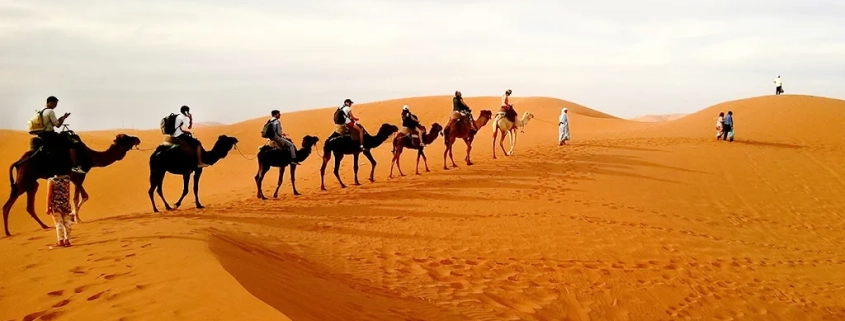



Leave a Reply
Want to join the discussion?Feel free to contribute!